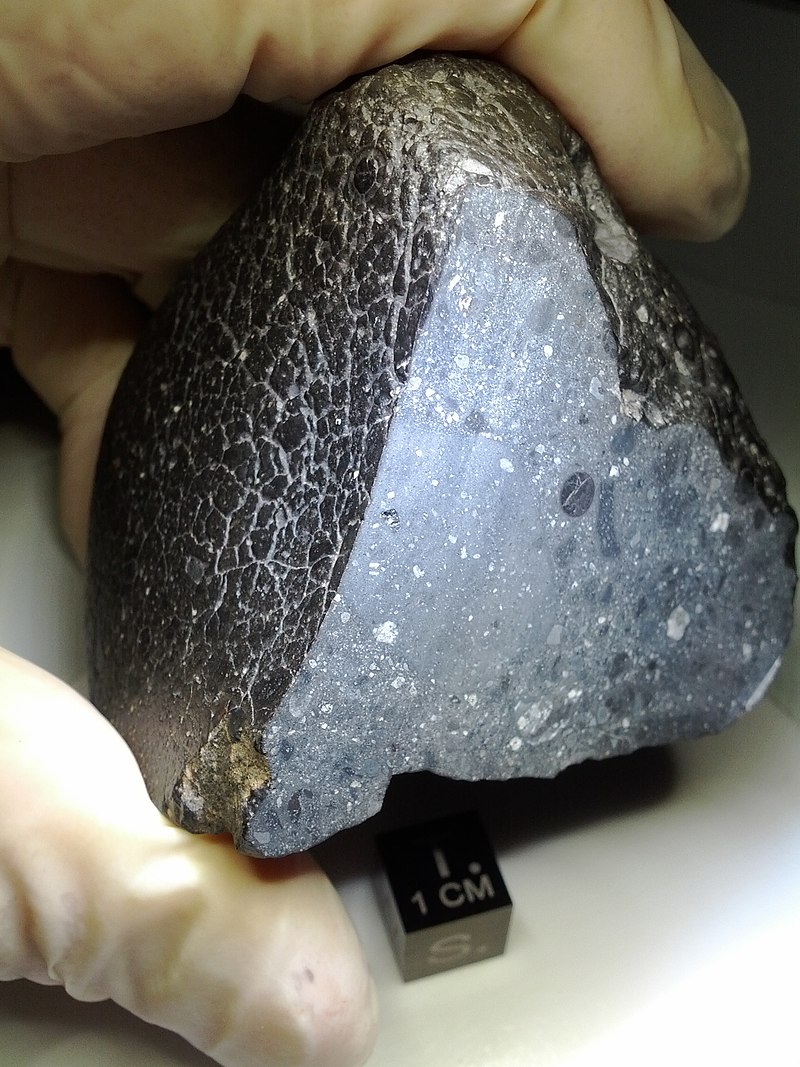Of the thousands of meteorites found on Earth, about 188 have been confirmed to be from Mars. How did they get here? Over the tumultuous history of our Solar System, asteroids have smashed into Mars with such force, the debris was blasted off the planet and then drifted through space, eventually entering Earth’s atmosphere, and surviving the journey to the ground.
Astronomers once thought it was a complex process, with only the most powerful impacts capable of throwing rocks from Mars into space. But new research shows that it takes much less pressure than previously believed, which means there could be more chunks of Mars floating in space and on their way to Earth.

A team of planetary scientists from Caltech used a new and powerful blast gun to simulate an impact on Mars. So not to harm any of the limited and precious supply of Mars meteorites, they used rocks from Earth containing plagioclase, which is a major component of Martian rocks.
Under high pressures — such as what occurs from an asteroid impact — plagioclase transforms into the glassy material known as maskelynite. According to the researchers, finding maskelynite in a rock indicates the types of pressure the sample came into contact with.
“We’re not on Mars, so we can’t watch a meteorite strike in person,” says Yang Liu, a planetary scientist at JPL and a co-author on the study. “But we can recreate a similar kind of impact in a lab setting. By doing so, we found it takes much less pressure to launch a Mars meteorite than we thought.”
Liu and Caltech professor Paul Asimow said that previous experiments had shown that plagioclase turns into maskelynite at a shock pressure of 30 gigapascals (GPa), which is 300,000 times the atmospheric pressure experienced at sea level, or 1,000 times the pressure a submersible comes into contact with while diving beneath 3 kilometers of ocean water.
But with the new and improved blast gun, this new study showed that the transition actually happens at around 20 GPa—a significant difference from previous experiments.
“It has been a significant challenge to model an impact that can launch intact rocks from Mars while shocking them to 30 GPa,” Asimow said in a press release. “In this context, the difference between 30 GPa and 20 GPa is significant. The more accurately we can characterize the shock pressures experienced by a meteorite, the more likely it becomes that we can identify the impact crater on Mars from which it originated.”

This new research follows a paper published last year that was able to pinpoint the origins of the “Black Beauty” meteorite from Mars (pictured above), as from an impact crater in the Terra Cimmeria—Sirenum region on the Red Planet.
How do we know these meteorites are from Mars? Martian meteorites can be traced to the Red Planet because they contain pockets of trapped gas that matches data from missions to Mars. In particular, an experiment performed by the two NASA Viking spacecraft that landed on Mars in 1976 measured the amounts of different gases in the thin Martian atmosphere. Those same gases were then found in 1983 trapped within shock glass veins and pockets in a meteorite called Elephant Moraine 79001, and now in other meteorites, as well.

